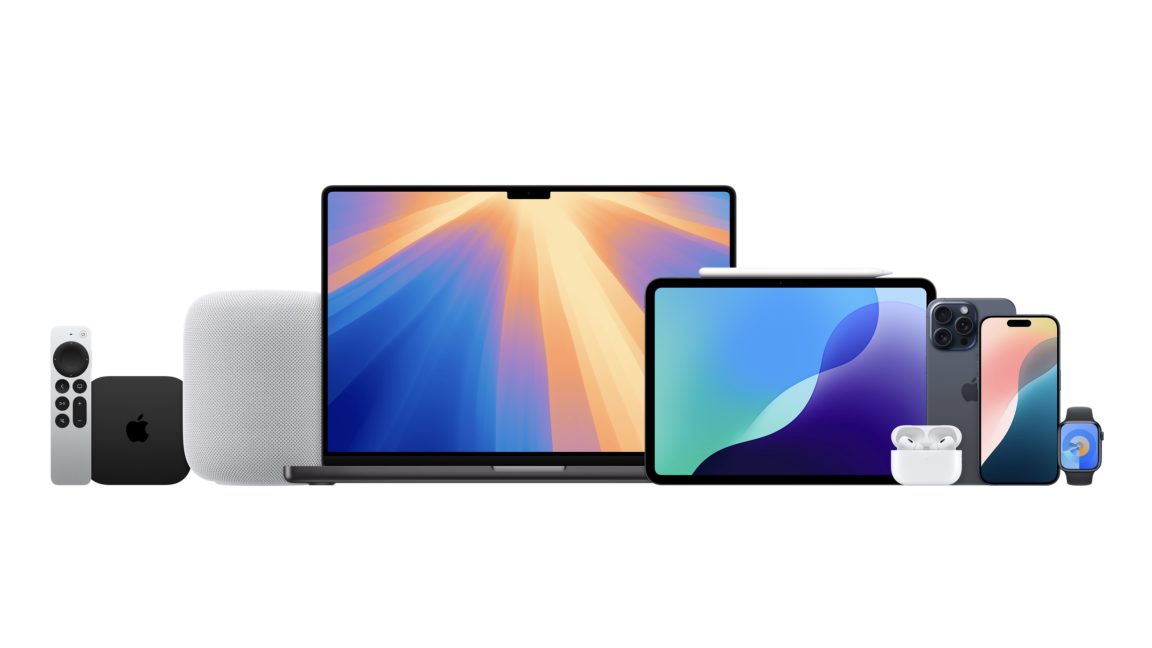Report: Apple will jump straight to “iOS 26” in shift to year-based version numbers
annus mutationis
Report: Apple will jump straight to “iOS 26” in shift to year-based version numbers
Instead of iOS 19, macOS 16, and watchOS 12, we'll get "iOS/macOS/watchOS 26."
Andrew Cunningham
–
May 29, 2025 10:37 am
|
29
Credit:
Apple
Credit:
Apple
Story text
Size
Small
Standard
Large
Width
*
Standard
Wide
Links
Standard
Orange
* Subscribers only
Learn more
There may never be an iOS 19 or a macOS 16, according to reporting from Bloomberg's Mark Gurman. At its Worldwide Developers Conference next month, Apple reportedly plans to shift toward version numbers based on years rather than the current numbering system. This is intended to unify the company's current maze of version numbers; instead of iOS 19, iPadOS 19, macOS 16, tvOS 19, watchOS 11, and visionOS 3, we'll get iOS, iPadOS, macOS, tvOS, watchOS, and visionOS 26.
The last time Apple changed its version numbering convention for any of its operating systems was back in 2020, when it shifted from "macOS X" to macOS 11. Note that the numbering will be based not on the year of the software's release but on the year after; this makes a certain amount of sense since iOS 26 would be Apple's most-current version of iOS for roughly nine months of 2026 and just three months of 2025.
The update to the version numbering system will be accompanied by what Gurman describes as "fresh user interfaces across the operating systems," a visual overhaul that will bring Apple's iPhone, Mac, watch, and TV software more in line with some of the design conventions introduced in Apple's visionOS software in 2024. Among the changes and additions will be another crack at "Mac-like" multitasking for the iPad.
Although major commercial operating systems have largely abandoned year-based branding since the days when Windows 98 and Windows 2000 were prevalent, many software products still use a year rather than a version number to make it easier to determine when they were released. Many Linux distributions use month and year-based version numbers, as do Microsoft's standalone Office releases. Windows Server shifted toward using years rather than version numbers 25 years ago and has stuck with them since.
Apple also uses years rather than version numbers to identify most of its Macs. But these use the year of the hardware's actual release rather than the upcoming year, possibly because Apple doesn't update all of them at the same predictable annual cadence.
Andrew Cunningham
Senior Technology Reporter
Andrew Cunningham
Senior Technology Reporter
Andrew is a Senior Technology Reporter at Ars Technica, with a focus on consumer tech including computer hardware and in-depth reviews of operating systems like Windows and macOS. Andrew lives in Philadelphia and co-hosts a weekly book podcast called Overdue.
29 Comments
#report #apple #will #jump #straight
Report: Apple will jump straight to “iOS 26” in shift to year-based version numbers
annus mutationis
Report: Apple will jump straight to “iOS 26” in shift to year-based version numbers
Instead of iOS 19, macOS 16, and watchOS 12, we'll get "iOS/macOS/watchOS 26."
Andrew Cunningham
–
May 29, 2025 10:37 am
|
29
Credit:
Apple
Credit:
Apple
Story text
Size
Small
Standard
Large
Width
*
Standard
Wide
Links
Standard
Orange
* Subscribers only
Learn more
There may never be an iOS 19 or a macOS 16, according to reporting from Bloomberg's Mark Gurman. At its Worldwide Developers Conference next month, Apple reportedly plans to shift toward version numbers based on years rather than the current numbering system. This is intended to unify the company's current maze of version numbers; instead of iOS 19, iPadOS 19, macOS 16, tvOS 19, watchOS 11, and visionOS 3, we'll get iOS, iPadOS, macOS, tvOS, watchOS, and visionOS 26.
The last time Apple changed its version numbering convention for any of its operating systems was back in 2020, when it shifted from "macOS X" to macOS 11. Note that the numbering will be based not on the year of the software's release but on the year after; this makes a certain amount of sense since iOS 26 would be Apple's most-current version of iOS for roughly nine months of 2026 and just three months of 2025.
The update to the version numbering system will be accompanied by what Gurman describes as "fresh user interfaces across the operating systems," a visual overhaul that will bring Apple's iPhone, Mac, watch, and TV software more in line with some of the design conventions introduced in Apple's visionOS software in 2024. Among the changes and additions will be another crack at "Mac-like" multitasking for the iPad.
Although major commercial operating systems have largely abandoned year-based branding since the days when Windows 98 and Windows 2000 were prevalent, many software products still use a year rather than a version number to make it easier to determine when they were released. Many Linux distributions use month and year-based version numbers, as do Microsoft's standalone Office releases. Windows Server shifted toward using years rather than version numbers 25 years ago and has stuck with them since.
Apple also uses years rather than version numbers to identify most of its Macs. But these use the year of the hardware's actual release rather than the upcoming year, possibly because Apple doesn't update all of them at the same predictable annual cadence.
Andrew Cunningham
Senior Technology Reporter
Andrew Cunningham
Senior Technology Reporter
Andrew is a Senior Technology Reporter at Ars Technica, with a focus on consumer tech including computer hardware and in-depth reviews of operating systems like Windows and macOS. Andrew lives in Philadelphia and co-hosts a weekly book podcast called Overdue.
29 Comments
#report #apple #will #jump #straight
·0 Reviews


